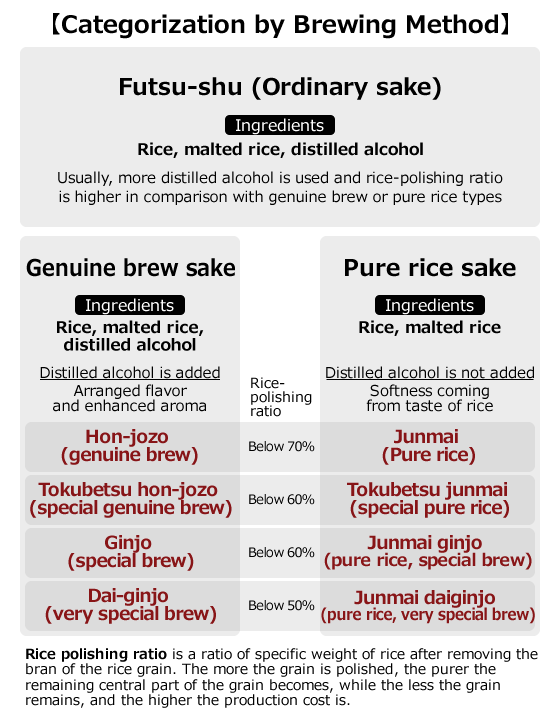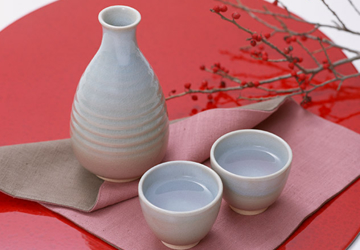
The labels on sake bottles have a variety of names such as junmai-shu, dai-ginjo and hon-jozo. What do they indicate?
These names are given according to the ingredients used or brewing method employed. Sake can be divided into two major groups, “junmai (pure rice)” and others. They can be further categorized into 9 different groups depending on the brewing methods.
“Junmai” type is made only of rice and malted rice. Those without the “Junmai” indication are produced by adding distilled alcohol to rice and malted rice.
Distilled alcohol provides aroma, sharpness and lightness. The Junmai type has sweet, thick taste while those with distilled alcohol has dry, light taste.
Indicated as “junmai”: junmai-shu, tokubetsu junmai-shu, junmai ginjo-shu, junmai daiginjo-shu
Not indicated as “junmai”: futsu-shu, hon-jozo-shu, tokubetsu hon-jozo-shu, ginjo-shu, daiginjo-shu
(“Shu” means “sake” in Japanese)

The bran of the rice grains is removed more for the type of rice used for sake-making than the one we normally eat.
More of the grains is polished since the taste of rice is stronger in the center, while the bran and the section underneath have an undesired taste for sake-making.
The more the rice is polished, the less remains, pushing up the production cost and the price of sake.